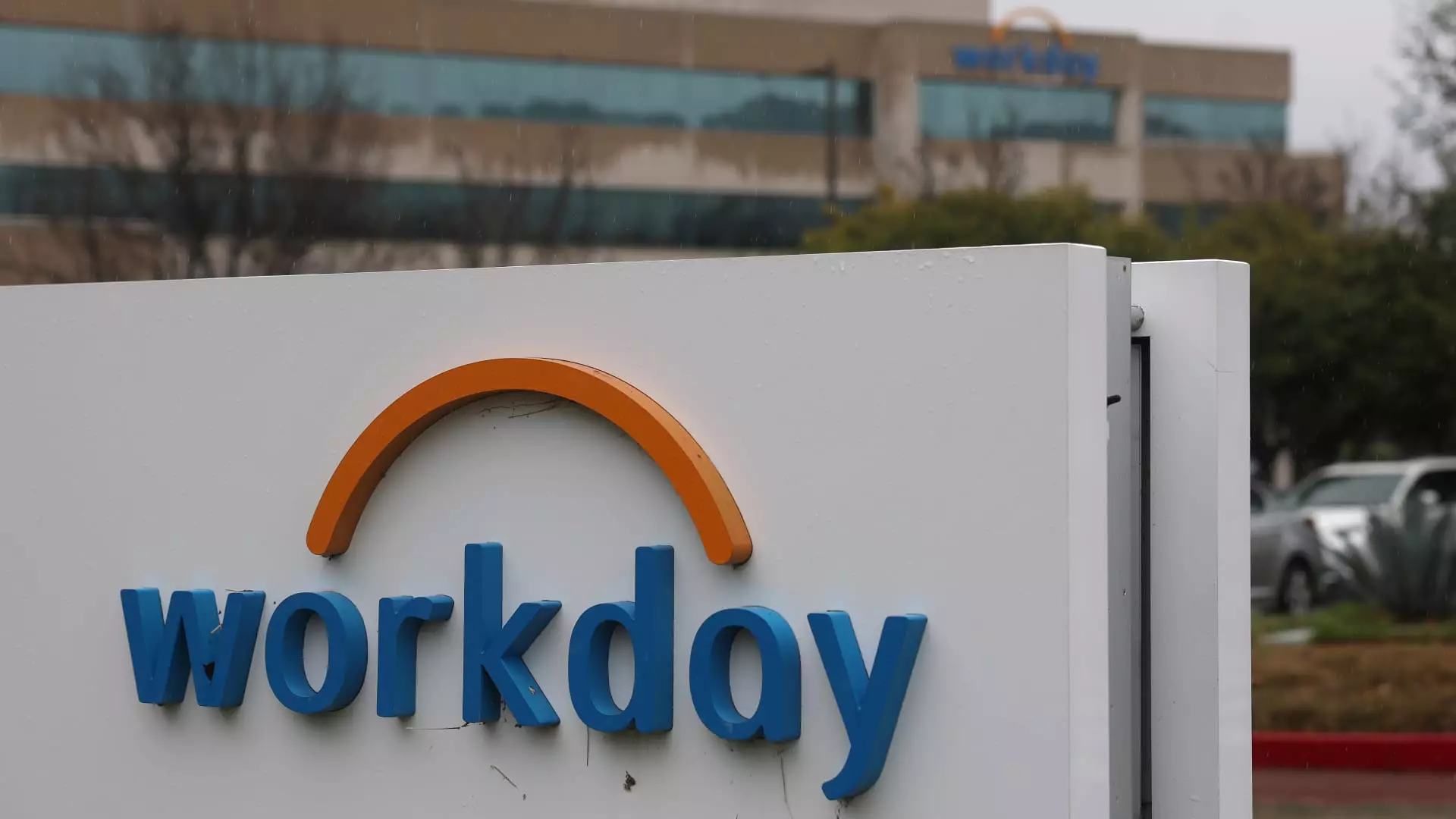In the tech-driven realm of enterprise software, few companies have managed to carve out the dominant position that Workday holds, especially in the human capital and financial management sectors. With a clientele featuring over 11,000 organizations—including a significant portion of Fortune 500 giants—Workday’s sticky subscriptions and high retention rates offer a solid foundation. Yet beneath this impressive veneer lies a troubling narrative: a once-visionary growth story now stymied by the gravity of its own success. It’s easy to laud Workday’s innovative AI integrations and expanding product suite, but a closer look reveals a business grappling with the consequences of unrelenting expansion—facing revenue stagnation, profitability challenges, and an overhanging governance question mark.
The company’s growth ethos has historically been one of relentless expansion, prioritizing market share over profitability. From a modest $300 million pre-IPO to nearly $9 billion in revenue today, Workday’s journey has been nothing short of extraordinary. Nevertheless, this “growth at all costs” approach has its downside: diminishing marginal returns and increasing difficulty in maintaining high growth rates at such a colossal scale. Investors, accustomed to the hyper-growth days, now focus on profitability and sustainable margins—areas where Workday has struggled. Its failure to turn significant profit is not merely a minor issue; it speaks to fundamental operational inefficiencies and the risks inherent in a business model that depends heavily on continuous reinvestment and upward expansion.
A Leadership Shift and the Hope for Fresh Strategic Vision
The recent appointment of Carl Eschenbach as CEO marks a pivotal inflection point for Workday. For years, Aneel Bhusri was the charismatic co-founder and guiding force behind the company’s prosperity. His visionary leadership was instrumental in scaling the enterprise from a fledgling startup to a global powerhouse. However, leading a sprawling public company requires more than innovation; it demands operational precision, disciplined cost management, and a clear strategic focus—traits that, arguably, Bhusri’s youthful entrepreneurial background may not have fully mastered in the later stages of growth.
The transition to Eschenbach’s leadership is not just symbolic; it signifies a deliberate effort to recalibrate Workday’s trajectory. Eschenbach’s proven capacity to optimize operations and execute strategic initiatives provides a fresh lens through which to view the company’s future. By stepping into the CEO role full-time, Eschenbach can now spearhead the multiyear plan unveiled at the recent analyst day, which emphasizes value creation through financial discipline, share repurchases, and margin expansion. These are not merely cost-cutting measures; they signal a shift towards operational efficiency that could finally unlock the company’s long-dormant profitability.
Strategic Investment and the Role of Activist Support
The involvement of Elliott Management underscores the importance of aligned interests and strategic oversight. With a $2 billion stake and a history of active engagement, Elliott’s backing signals a turning point for Workday’s governance structure. Some critics dismiss activist investors as disruptive or short-sighted, but Elliott’s approach often emphasizes collaboration and strategic input, especially in a company with an entrenched founder controlling over 70% of voting shares.
Elliott’s support for the new management team and strategic initiatives suggests that a more shareholder-focused governance model may now be in the works. The infusion of external oversight, combined with the appointment of a seasoned operator like Eschenbach, should help mitigate concerns over agency issues inherent in founder-controlled firms. Investors are increasingly wary of companies where the founder’s vision might clash with shareholder value, but this alliance could indicate a shift towards more balanced governance—one that prioritizes sustainable growth over short-term gains.
The Opportunity in AI and Future Growth Catalysts
Artificial intelligence remains the most compelling growth avenue for Workday, given its potential to revolutionize HR and financial workflows. The company’s recent AI-driven revenue surge—doubling in just a year—demonstrates that automation can be more than a feature; it can be a core driver of growth. Workday’s acquisitions of Sana, Paradox, and Flowise further underscore its commitment to consolidating technological expertise and capturing the AI-driven transformation in enterprise software.
With over $8 billion in net cash, Workday is well-positioned to fund buybacks, strategic acquisitions, and continued R&D investments. The company’s focus on cost maintenance—rather than indiscriminate cuts—alongside margin promises, hints at a disciplined approach that balances growth with financial health. As AI becomes more embedded into enterprise workflows, Workday’s early investments could position it as the market’s dominant player in automated HR and finance solutions. However, the execution risks remain substantial, and market skepticism about management’s ability to transition from hyper-growth to sustainable profitability lingers.
Governance and the Long-Term Outlook
The presence of a powerful controlling shareholder—Bhusri’s over 70% voting power—has historically cast a shadow over corporate governance perceptions. This “control discount” can hinder share price appreciation if markets doubt management’s alignment with shareholder interests. Yet, the recent strategic onboarding of non-family executives and Elliott’s transparent involvement might help credibly align incentives.
Looking ahead, Workday’s transformation hinges on a delicate balance: leveraging innovation without overextending, maintaining operational discipline while pursuing strategic M&A, and earning investor trust in a landscape increasingly scrutinizing governance. While there is undeniable potential, the path forward remains fraught with challenges. Market participants must decide whether Workday’s current initiatives are enough to propel it beyond its current valuation and growth ceiling or if it risks becoming an overstretched enterprise incapable of translating ambition into meaningful shareholder returns.

